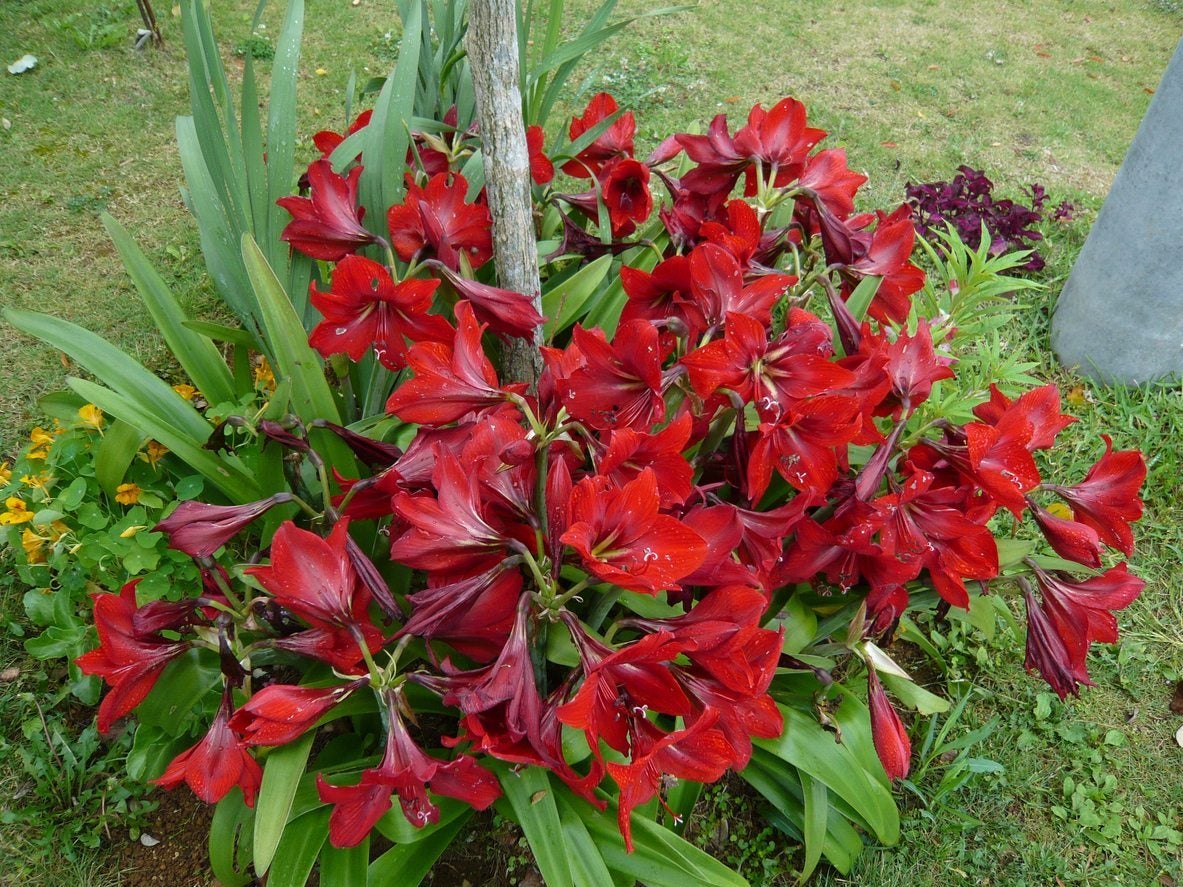Separating Amaryllis Plants: How To Divide Amaryllis Bulbs In The Garden


Amaryllis plants are prized for their large, exotic, trumpet-shaped flowers which can be forced indoors to bloom during the winter months. After receiving festive potted amaryllis plants as gifts or using them for holiday centerpieces, gardeners in warm climates often plant them in perennial beds outdoors.
In time and with the right amaryllis care, outdoor amaryllis bulbs will reproduce and naturalize. Amaryllis plant division is not only a way to control amaryllis colonies, but it also keeps plants healthy while allowing you to make more of your own amaryllis bulb centerpieces.
Separating Amaryllis Plants
In the United States, amaryllis bulbs can grow well outdoors in most parts of zones 8 through 11, with some varieties even overwintering in zone 7. In the right conditions, outdoor amaryllis plants will produce new bulbs each year, naturalizing into dense colonies. When too many bulbs form underground in a spot, they can begin to choke each other out. Like lilies, hosta, daffodils, or many other plants, the overgrown clumps can be divided to space plants out and rejuvenate them. When to split amaryllis plants will depend on what you intend to do with the bulbs. In late summer and fall, amaryllis can be taken from the garden to force into bloom for the holidays. However, garden amaryllis plants are usually divided in autumn months (October/November) or February and March in warmer regions. Dividing outdoor amaryllis plants at these times will allow them their natural dormancy period to form spring blooms.
How to Divide Amaryllis Bulbs in the Garden
Before amaryllis plant division, you should prepare the new site or containers. Add soil or amendments to provide a well-draining, healthy soil to reduce transplant shock. Amaryllis bulbs will benefit from the addition of rich, organic matter. Pre-dig holes with a bulb planter or auger. In regions with dry winters, it may be necessary to water the planting site deeply 24 hours before digging to make the soil easier to work with. You can also trim off any stalks and foliage remaining on the amaryllis at this point. Use a sharp garden spade to cut a circle around the clump of amaryllis bulbs. Keep the spade a few inches (8 cm.) away from any bulbs and cut deeply down into the soil. Then gently lift the bulb clump out of the earth; many gardeners prefer to use a garden fork for this step. Once the selected amaryllis has been dug up, carefully remove the soil around the bulbs. Rinsing the bulbs with water or gently shaking them can help remove the dirt to allow you a better view. While some bulbs may easily separate or fall off the clump of bulbs, it may be necessary to use a clean, sharp knife to cut the bulbs apart. Look over each bulb carefully and discard any that look sick, mushy, or have signs of insects, such as boring holes. The remaining healthy bulbs should be planted immediately in the garden or designated containers. Plant bulbs 2 to 4 inches (5-10 cm.) deep and water thoroughly.
Sign up for the Gardening Know How newsletter today and receive a free copy of our e-book "How to Grow Delicious Tomatoes".

Darcy is a former contributor to Gardening Know How. She is a professional landscape designer and gardening writer with experience in plant sales. An avid gardener, Darcy has a passion for sharing practical tips to help others grow.